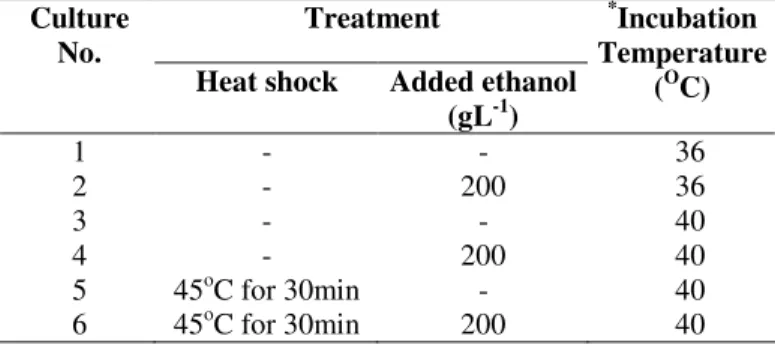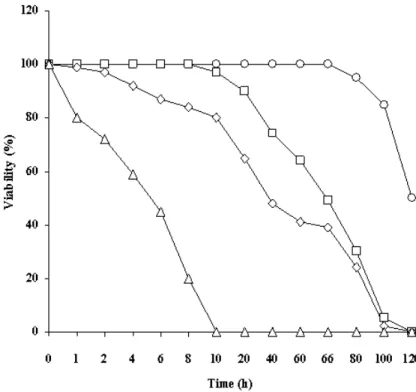MATERIALS AND METHODS Materials
Texto
Imagem




Documentos relacionados
The results obtained from the experiments that used the Catlin 6 medium (Table 2), where the initial glucose concentration was 10.0 g/L (Table 1) and the residual glucose value at
The recognition of bacterial components on the intestinal epithelial cells occurs through the toll like.. receptors and is followed by the induction of an effective
Tests for heat stability showed that the cell monolayer lost approximately 30% cell viability when the bacterial filtrates were heated to 60 o C, and no cytopathic effect was
ABP – Associação de Basquetebol do Porto ADE – Associação Desportiva de Escolas CDE – Clube do Deporto Escolar CLDE – Coordenação Local do Desporto Escolar CLDE - Porto
Results: Immediately after the heat shock, cells began a process of fast degradation, and, in the first 24 h, cultures showed decreased viability, alterations in cell morphology
TABLE 3: Density of (DS) viable and non viable spores, root colonization (RC) e most probable number (MPN) of infective propagules in four successional stages of caatinga, in
The partial 16S rDNA sequence showed a similarity of 94% to Bacillus caldoxylolyticus and Bacillus sp strain AK1 and 90% to 91% of similarity to Bacillus stearothermophilus ,
Intermittent catheterisation with hydrophilic-coated catheters (SpeediCath) reduces the risk of clinical urinary tract infection in spinal cord injured patients: a


